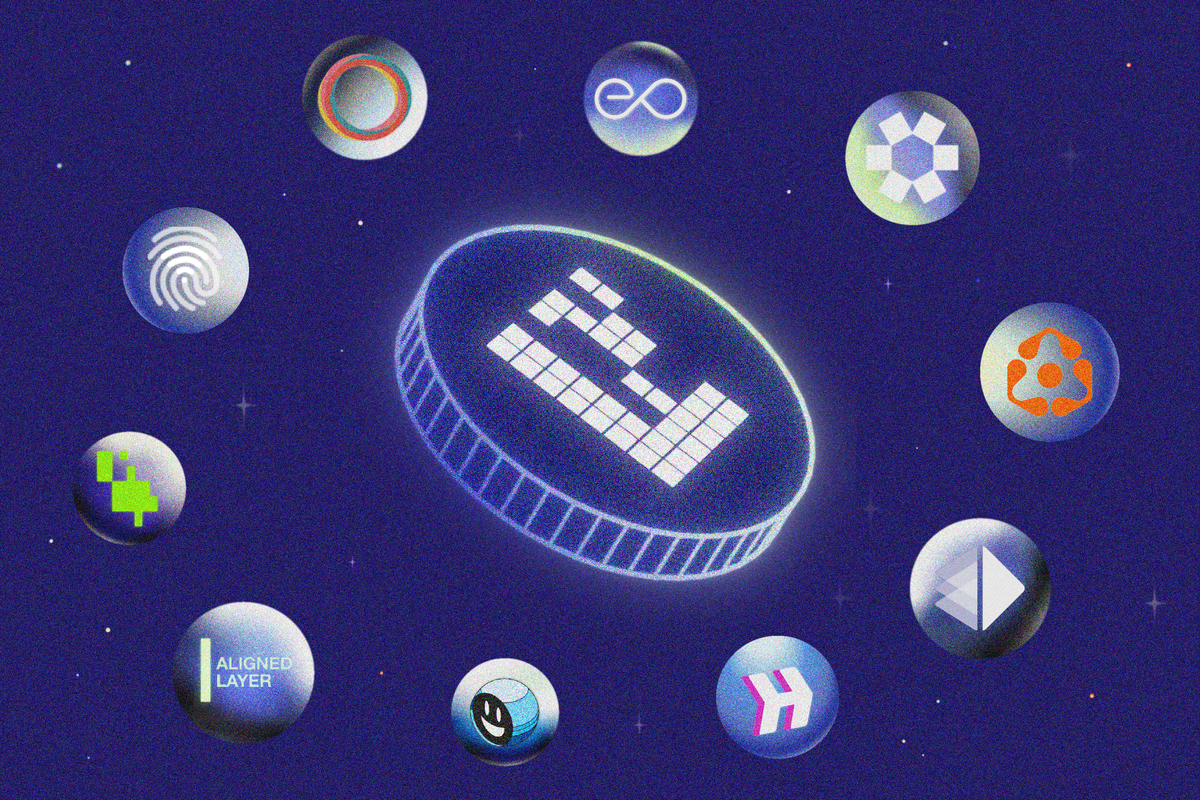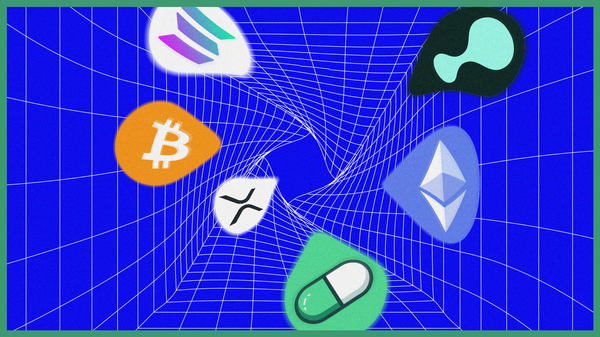The EigenLayer AVS Landscape - 10 Protocols You Should Know
In a sea of new launches, which AVSs should you pay attention to?

On April 9, one of the most anticipated events of the year happened: Eigenlayer announced its launch on mainnet with eigenDA as the first official actively validated service (AVS). While traders and CT immediately looked after new narratives in this market, let’s take a step back to understand the significance of the magnitude of this headline.
Want access to more free research reports? Subscribe below and join 10,600+ weekly readers 🗂
Introduction
If you are totally unfamiliar with EigenLayer, this is the project that introduced “restaking”. Put simply, it allows anyone to tap into Ethereum's trust and security, therefore eliminating the need to build their own from scratch. In practice, EigenLayer’s users stake their ETH a second time. Under the hood, they agree to secure another system besides Ethereum, thus adding some slashing conditions to their staked ETH. If they fail to secure this system, their stake is slashed—or lost, if you prefer—even if they correctly secured the Ethereum chain. The main point of EigenLayer is to lease Ethereum security to other projects and become the first market for decentralized trust.
Efficient markets thrive on both sellers and buyers. Sellers, in this context, are EigenLayer users who restake their ETH through Operators, which are entities offering various services to buyers. Buyers, on the other hand, are AVSs (Actively Validated Services). In formal terms, it is defined as any system that requires its own distributed validation semantics for verification. Put it more simply, they are the projects using EigenLayer to enhance the overall security and functionality of their networks. AVSs essentially consume decentralized trust.
Bootstrapping security has long been a hurdle for new projects, constraining innovation. Eigenlayer promises to change that narrative. In the coming months, we expect a surge of AVS launches, kickstarting a new era of innovation in our beloved crypto space. Let's explore some of the most anticipated AVSs.
1️⃣ EigenDA
EigenDA is EigenLayer’s data availability solution. It is the first AVS to ever go live. Just like other alternative data availability layers such as Celestia or NearDA, rollups leveraging EigenDA will benefit from significantly lower transaction costs and higher throughput. Built with scalability, security, and decentralization as its primary pillars, EigenDA offers a design capable of delivering 10 MB/s of write throughput. To put this into perspective, Ethereum currently offers only 83.33 KB/s, set to increase to 1.3 MB/s with DankSharding. Already, EigenDA has garnered attention from numerous projects including Mantle, Polymer, LayerN, and Movement Labs. Moreover, RaaS projects like Caldera and AltLayer have seamlessly integrated EigenDA into their stack, empowering developers to deploy rollups with EigenDA in just one click.
2️⃣ AltLayer
AltLayer has forged a partnership with EigenLayer to develop their innovative restaked rollups. These rollups leverage EigenLayer’s restaking mechanism to enhance decentralization, security, interoperability, and efficiency. Restaked rollups feature three distinct AVSs: VITAL for decentralized verification, MACH for swift transaction finality, and SQUAD for decentralized sequencing. These functionalities can be integrated on demand, even into existing rollups. Xterio Games stands as the first restaked rollup to utilize MACH, providing near-instant transaction confirmations—an indispensable feature for projects like Xterio focused on AI Gaming. With MACH, Xterio will be able to ensure finality in less than 10 seconds without compromising security.
3️⃣ Omni
Omni is a blockchain purpose-built to securely connect all rollups through the use of restaking. With hundreds of different rollups, Ethereum’s users and their capital are increasingly divided into isolated ecosystems. This fragmentation has led to a suboptimal state and poor user experience. Omni aims to unify all these rollups. Using Omni, developers can program across multiple Ethereum rollups as if they were working within a single state machine. Applications built with the Omni EVM can exist across all Ethereum rollups by default, enabling developers to integrate Ethereum’s entire liquidity and user base into their applications without constraints. The way Omni leverages Eigenlayer is particularly interesting: Instead of solely securing the Omni Network with the OMNI governance token, it incorporates restaked ETH to enhance the security of its network. Dual (and even multi-asset) staking is something we anticipate will gain popularity in the near future.
4️⃣ Lagrange
Lagrange is building a modular ZK coprocessor that offers trustless off-chain computation. When developers undertake heavy on-chain computations, such as querying the number of Pudgy Penguins held by a certain address, they encounter a problem: extremely high fees. With the Lagrange ZK coprocessor, this data becomes more accessible and less expensive. In practice, the query is moved off-chain, executed, zk-proven, and verified back in the contract. This ultimately enables the development of more complex and data-rich applications, such as games, for example. As Lagrange is designed to be chain-agnostic, it plays an important role in cross-chain interoperability, with the EigenLayer integration fortifying the security of these interactions.
5️⃣ Aligned Layer
Aligned Layer is the first universal verification layer for Ethereum built on top of EigenLayer. In practice, rollups send their proofs to Aligned Layer instead of Ethereum. Aligned Layer verifies the proofs, aggregates them into one, and sends it to Ethereum. It's crucial to mention that it's not the proofs that are stored on Ethereum, but rather the results of the verification performed by Aligned Layer. This approach offers several advantages: it is cheaper, increases interoperability, and most importantly, it allows developers to use any proof system, even if it's not Ethereum-compatible. By accepting various proof systems, developers can now choose the one that best suits their needs in terms of speed, proof size, ease of development, and security considerations, without having to worry about Ethereum compatibility or cost. While the results of verification are posted to Ethereum, the actual proofs are posted to a DA Layer such as Celestia or eigenDA. Regarding Aligned Layer's use of EigenLayer, they will employ restaking to secure the entire verification process via a dual staking model with restaked ETH and a future governance token.
6️⃣ Hyperlane
Hyperlane is the first interoperability layer that enables permissionless connection to any blockchain. Its main competitive advantage lies in its permissionless feature. Rather than needing to lobby for your chain/rollup to be supported by a cross-chain messaging protocol like Wormhole, Hyperlane allows you to use its service permissionlessly. Concretely, this means you only have to deploy a few smart contracts for your chain to be connected to other chains using Hyperlane. Hyperlane announced plans to develop an EigenLayer AVS back in February 2023 to enable interchain application developers to securely send messages from Ethereum to other chains supported by Hyperlane.
7️⃣ Witness Chain
Witness Chain defines itself as a DePIN Coordination Layer that unifies a siloed DePIN economy. In practice, Witness Chain enables DePIN projects to convert unverified physical attributes such as their physical locations, network capacities, and more into verified digital proofs. These proofs can later be attested/challenged and consumed by different apps or DePIN chains themselves to build new products and services. This will ultimately allow DePINs to connect with each other, establishing an end-to-end supply chain of decentralized infrastructure. With already over 20 DePINs projects part of the Coordination Layer, WitnessChain ensures their state validation process through EigenLayer Operators.
8️⃣ Eoracle
eoracle is a modular and programmable oracle network. You're probably already familiar with what an oracle network is, but as a small reminder, it is how off-chain data is brought on-chain. Whether it's NBA scores, weather data, or stock prices, blockchains cannot access them without a reliable oracle. Eoracle leverages EigenLayer to build an oracle network, or a network of people looking at data, agreeing on their accuracy, and recording them on-chain. Instead of building this network of people, or nodes if you prefer, themselves, eoracle will leverage EigenLayer’s Operators to perform this task. It will be interesting to see how this Ethereum-native solution can compete with Chainlink and co.
9️⃣ Drosera
Drosera is an incident response protocol that leverages hidden security intents to contain and mitigate exploits.,Simply put, Drosera is a security marketplace where DeFi protocols can set a Trap, or a security threshold if you prefer, to determine whether an emergency response should be triggered. When emergency conditions are met, Operators execute a protocol's on-chain emergency response upon consensus. For example, Nomad could have set up a Drosera Trap capable of detecting a 30% TVL siphon over a 1 block range and prevented the continued draining of Nomad Pools during their $190m exploit.
🔟 Ethos
Ethos provides an all-in-one solution for Cosmos chains to seamlessly leverage the security of restaked ETH. Building new Cosmos chains comes with a cost: setting up a validator network. Projects must persuade validators and users to hold and stake the native token. To overcome this barrier, Ethos has built the Guardians Chain. It is a Layer 1 validated by EigenLayer’s Operators that acts as a security coordination layer. Projects looking to bootstrap a validator set for their L1 can hire these Guardians as virtual validators and, therefore, benefit from Ethereum security. You can see this process as a runoff: Ethos is secured by Ethereum through EigenLayer, and Ethos secures any Cosmos L1 wishing to avoid the process of bootstrapping their own validator set.
Concluding Thoughts
EigenLayer AVSs offer limitless possibilities. This article barely scratches the surface of what they can achieve, and the future holds even more innovation. Share your favorite AVSs in the comments below, we’re waiting from your alfas!
Disclaimer: The information provided is for general informational purposes only and does not constitute financial, investment, or legal advice. The content is based on sources believed to be reliable, but its accuracy, completeness, and timeliness cannot be guaranteed. Any reliance you place on the information in this document is at your own risk. On Chain Times may contain forward-looking statements that involve risks and uncertainties. Actual results may differ materially from those expressed or implied in such statements. The authors may or may not own positions in the assets or securities mentioned herein. They reserve the right to buy or sell any asset or security discussed at any time without notice. It is essential to consult with a qualified financial advisor or other professional to understand the risks and suitability of any investment decisions you may make. You are solely responsible for conducting your research and due diligence before making any investment choices. Past performance is not indicative of future results. The authors disclaim any liability for any direct, indirect, or consequential loss or damage arising from the use of this document or its content. By accessing On Chain Times, you agree to the terms of this disclaimer.





